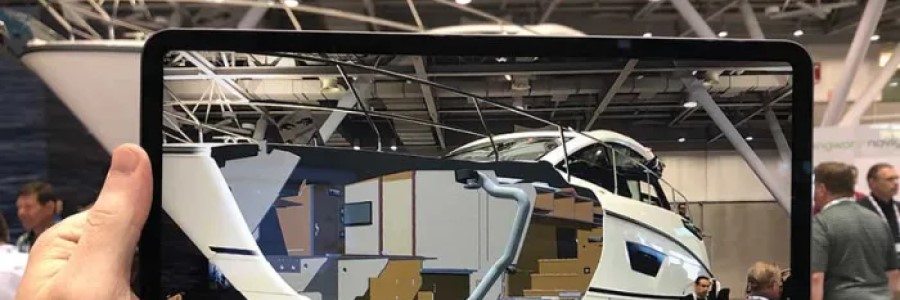
2019 was an exciting year in the world of PLM (i.e. Product Lifecycle Management). Virtually every major manufacturer from Volvo to Raytheon, Jabil to Stryker, Beneteau to Bosch, and more have positioned themselves as digital leaders with enterprise-wide PLM.
As these organizations shed their homemade software and integration through Microsoft Excel, PowerPoint, and Word, they now see a path to grow faster than the market and achieve best-in-class margins—with a level of global flexibility they had only dreamed about just a few years ago. In 2020, we will see these innovators capitalize on an entirely new set of decision-making tools that leverage their digital thread investments.
Here are five hot new trends in PLM to watch for in 2020.
PLM Visualization is the ability to view a product and its related documentation from the CAD (ECAD, MCAD, PDF, etc.) or design level through to the product review level, in both 2D and 3D.
In 2020, we will see the ability for cross-functional teams to visualize the product in augmented reality (AR) from any perspective in context; this innovative technology will enable users to review virtual prototypes with all its possible options and variants.

Consider how amazing it is to zoom in on the exact part you need, examine its configuration and status, see exactly how to service it, and understand it in context of all the other parts around it—especially if considering a design change to that part.
Digital transformation or Industrial IoT implementations can be expensive, and stakeholders often expect fast returns on what are admittedly large-scale capital investments; however, results may not be immediate, so it is essential to build quick wins into the long-term strategy or risk losing support within the company.
Smart Connected People (through wearables or other mobile devices), all enabled by PLM configuration lifecycle management, will make workforce productivity and quality soar. For example, connected workers (donning a Microsoft HoloLens 2) will be dispatched remotely with AR-driven digital work instructions that provide a full understanding of the equipment they are servicing and seamless visibility into PLM, MES, and ERP platforms.
On the manufacturing plant level, digital simulations will help measure the impact of new product introductions allowing for “what if” scenario evaluations.
Furthermore, digital twins, combining the physical and digital aspects of a product, will be applied to design, operational planning, and training of and on those products.
Globally distributed manufacturing environments that operate between intra-company and inter-company teams can cause concern among stakeholders—especially where millions of dollars of IP (i.e. Intellectual Property) is involved. PLM vendors, manufacturers, and suppliers all must build trust industry-wide that enables them to quickly mitigate and act to help further secure their products and deployments.
Global agility no longer means lack of precise control of where strategic product data lives, who gets access to it, and under what circumstances. Strict access control to data based on role- and task-based views, along with a secure PLM system, enables collaborative work environments both inside and outside the walls of the enterprise.
Cloud security certifications from top providers, like Microsoft Azure, provide additional levels of data security, such as FedRAMP (i.e. Risk and Authorization Management Program), ITAR Compliance, and DFAR 252.204-7012 (for DoD contractors).
With a solid foundation of traceability and change control comes an ability to expand the number of variants, while lowering the number of components. There is also an increased opportunity to build supplier and customer partnerships, as they are connected and able to help assess the impact of change, providing a more complete understanding of dependencies.
More customization (or, mass personalization) is a key strategy in market disruption. The more Engineering by Choice options a manufacturer can offer their customers, the better they can differentiate themselves from the competition. PLM enables this with powerful tools for such things as overloaded BOM transformation and managing options and variants of a company’s flagship products.
Products have changed. They have gone from simple electric/mechanical machines to software/electronic control. Breaking down the complexity, with all teams working from the same information, makes it easier than ever to build in higher levels of quality. As organizations move from document-based to streaming data near real-time, they can implement automated quality processes, resulting in less scrap and rework, ramp up defects, and field failures.

These PLM trends are the tip of the iceberg when it comes to innovation on an industrial/enterprise scale. From AR-driven parts and product data visualization, smart connected human-machine interfaces powering such capabilities as training and work instructions, to rock-solid certified security best practices, and more, 2020 looks to be a banner year of innovation for PLM as the digital thread weaves its way into every aspect of the manufacturing eco-system.
Editor's Note: A version of this article appeared in the Yearbook 2020 of New Design Magazine.
Kevin Wrenn is the divisional general manager of PTC's PLM segment. He is responsible for driving the business strategy, executing go-to-market and product lifecycle activities, and delivering customer success. Kevin redefined PTC's PLM strategy, implemented a new operational framework with the worldwide sales force tor targeting and managing pipeline-building activities, delivered key new capabilities such as PLM in the PTC Cloud and ThingWorx Navigate, and has managed relationships with key customers including John Deere, and VW. He attended Rensselaer Polytechnic Institute and Boston University.
©Copyright 2024. All rights reserved by Modelcam Technologies Private Limited PUNE.
Image Courtesy : PTC